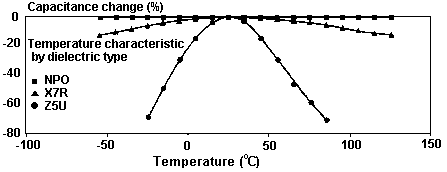BMDO-STTR Phase 1
R&D
November 10, 1999
BMDO-STTR Contract No. DTRA01-99-M-0074
Contractor InPod,Inc.: 8601 Cross Park Drive, Suite
100, Austin Texas 78754
Corporate official: Greg Hollingshead; 512-970-3204
Subcontract to the University of Houston; (PI: Prof.
A. Bensaoula ; Co-PI: Dr. N. Badi)
Title:
Multilayer Ceramic Capacitor Chip (MLC3’s)
for High-Energy Density Storage
and High Frequency Power Switching Device Applications
Objectives:
The objective of this phase I research was to develop
low-cost, high-energy density, multilayer boron nitride
capacitors that operate in an extended range of
temperatures.
The three tasks as defined in the phase I contract
were:
- Task 1: Processing and patterning
- Task 2: Boron nitride capacitors
fabrication
- Task 3: Frequency and temperature
characterization of the capacitor structures
During this phase 1 contract, efforts were devoted to
demonstrate the feasibility of fabricating single and
multilayer ceramic capacitor chips (MLC3’s) based on
insulating thin boron nitride (BN) layers and conductive
copper (Cu), aluminum (Al), and titanium nitride (TiN) as
internal electrodes.
In task 1, we used plasma and chemical etching of BN
films as well as standard processing techniques (photolithography,
metallization) in the fabrication of the capacitor
devices.
In task 2, we used ion and electron cyclotron
resonance plasma (ECR) sources assisted physical vapor
deposition (PVD) technique to generate the thin film
materials.
In task 3, we performed breakdown voltage,
capacitance, C-V, SIMS, SEM, and frequency/temperature
measurements in the characterization of the BN capacitors.
In addition, business research and marketing strategy
studies were conducted with the help of business school
students. Their final report was enclosed as part of the
phase II proposal. These studies have been directed into
the following areas:
- Overview of the thin film capacitors market;
- PVD process and equipment information;
- Economic industry trends;
- Target capacitor manufacturers;
- Niche applications for our BN capacitors.
Introduction
Multilayer ceramic capacitors (MLCCs) are the most
reliable source for high-energy density storage banks.
They also find use in high frequency switch mode power
supplies. MLCCs have a large share in the capacitor
market. Recently, much effort has been paid to achieve
higher capacitance using MLCCs with smaller size. The
realization of multilayer ceramic capacitors with higher
capacitance and volumetric efficiencies is today the
biggest challenge for MLCC’s manufacturers. These
MLCCs are expected to extend the application field where
electrolytic or plastic film capacitors are currently used.
The main limiting factor for MLCC development is that
of thickness control and integrity of the dielectric
layers as well as effective electrodes; the value of the
dielectric constant being somewhat a secondary
consideration. The objective being, smaller case sizes
for a given capacitance value, higher capacitance value
in a given case size, higher reliability and lower cost
per unit. Three types of dielectric have come to dominate
the market. Their characteristics in the form of
percentage change in capacitance as a function of
temperature are shown in Fig.1. One can see clearly the
limited operating temperature and none of these types and
especially Z5U capacitor will stand the heat inside the
engine compartment of an automobile or in a military
fighter aircraft. Besides, these capacitors display a
high rate of aging.

Fig. 1. The change in capacitance as
a function of temperature for the three most popular
ceramic capacitor
The formal equations of capacitor are:

f: conversion factor
Metric system: f = 11.31: centimeter
English system "inch" f= 4.452
In our case, the energy stored U will be:

The energy density stored in a capacitor is the
potential energy/volume

Where K is the relative dielectric constant of
the material, A is the effective area of the
internal electrode, d is the thickness of the
dielectric layer, and E is the electric field.
Parametrically, it is desirable to optimize K, A/d
and E simultaneously. Practically, it has been
easier to attack the problem from two approaches. The
first of these is to engineer dielectric films with high K
and E. This work has extended the energy density
of "conventional" capacitors by an order of
magnitude. The current trend is to optimize the A/d
ratio in the expression for the capacitance. This will
result in high energy density at low voltage.
The parameters of interest for such capacitors include:
- Capacitance (C).
- Temperature coefficient of capacitance (TCC).
- Breakdown voltage (BDV).
- Capacitance per unit volume or weight (volumetric
or weight efficiency).
- Dissipation factor (DF) or loss tangent.
- Insulation resistance (IR).
- For certain applications, radiation immunity.
Applications addressed with this Phase I research
Compact and miniature power sources with extended
range of temperature can replace existing capacitors and
will meet several new heavy-duty devices applications in
the semiconductor industry (i.e. surface mount industry),
military (i.e. explosives, fuses, safe-arm-fire devices,
and explosive detonators, etc.), and space (i.e. compact
power supplies, solar-powered equipment, etc.). They are
well suited for pulse power applications such as ignition
systems, lasers, x-ray generation, power supplies,
electric vehicles, solar-powered equipment and physics
research. Applications involving compact power density
sources operating in harsh environments and compatible
with Micro Electro Mechanical Systems (MEMS) are not
excluded. They also find use in high frequency switch
mode power supplies because they can be optimized to
minimize both effective series resistance (ESR) and
effective series inductance (ESL).
With the use of BN as the dielectric, we are able to
expand the operating temperature limit to 800 oC
or more. Secondly this technology allows the MLCC to be
more compact and easily reach the <1000 Å size versus
the 3 mm layer
thickness limitation exhibited by currently used
capacitors.
|



